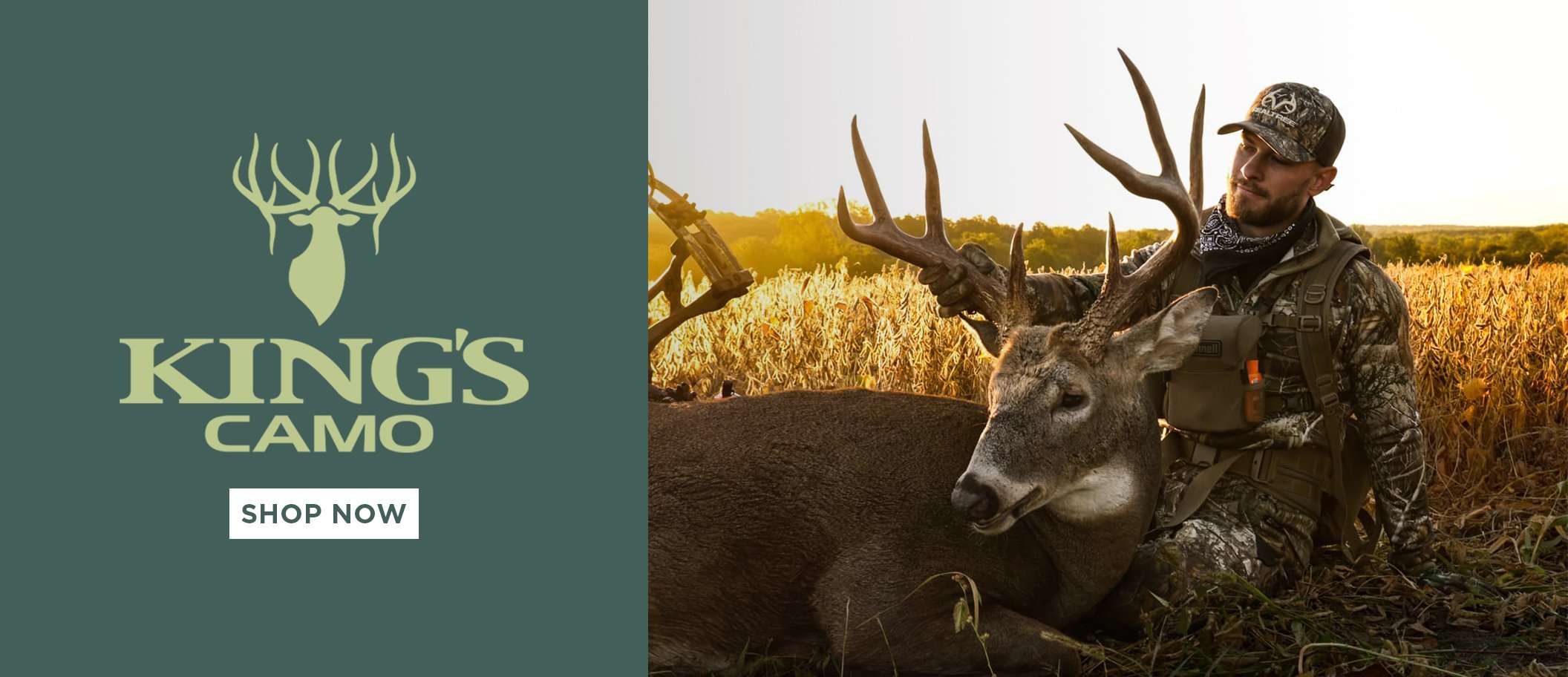Acorns can mean an early rut, shooting slumps happen to everyone, why you should always hunt every minute of legal light, and more
BRANTLEY’S LESSONS
I began this past deer season in early September, sitting in a lock-on stand on the ridge above my house. It was near 90 degrees that day, and though I saw some deer, I did not kill one.
I ended the season a couple of weeks ago on the same ridge, hunting with a buddy who was looking to fill one last doe tag before the curtain call. The January weather was brutal, with wind chills in the teens. We saw some deer but did not kill one.
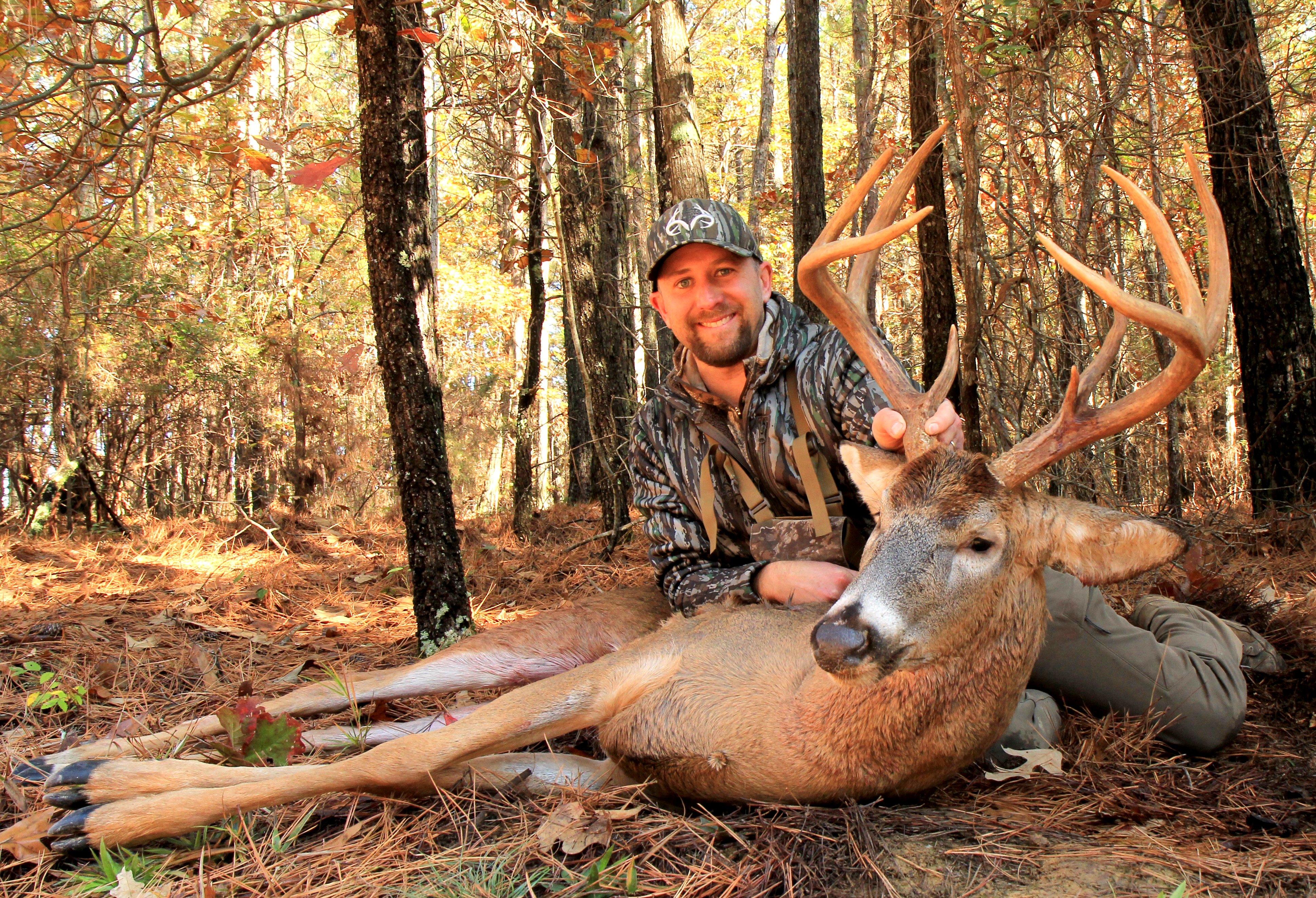
Will Brantley with his late-October Kentucky buck. Image by Will Brantley
In between those hunts were four glorious months of deer season, during which I punched some tags and missed a few opportunities, too. There were bucks I’ll never forget, such as the nice 8-pointer my son shot in Tennessee the morning I let him skip school, and moments I’d rather forget, such as the wasp nest that was waiting for me inside the Cowbell of one of my Hunter Safety System LifeLifes (free lesson there: pull those LifeLines after the season).
As always, this deer season was full of lessons for anyone willing to pay attention. Here are some that Realtree whitetail expert Mike Hanback and I took away in 2023.
— Will Brantley
Heavy Mast Means an Early Rut
I’ve been writing weekly rut reports for the Southeast Region for one website or another every deer season for a decade. Years ago, a deer biologist in West Virginia told me that in years with a heavy mast crop, you can expect an earlier, more intense rut. The reason is because deer go into the rut in prime physical condition from all the nutrient-rich acorns. That always stuck with me.
This past fall, we had a record mast crop around here, and the rut activity I saw in late October was the best I’ve ever seen. My 9-year-old son, Anse, shot a great 8-pointer Oct. 22, and I punched my Kentucky buck tag Oct. 30. Both bucks were chasing does as if they’d never see another one.
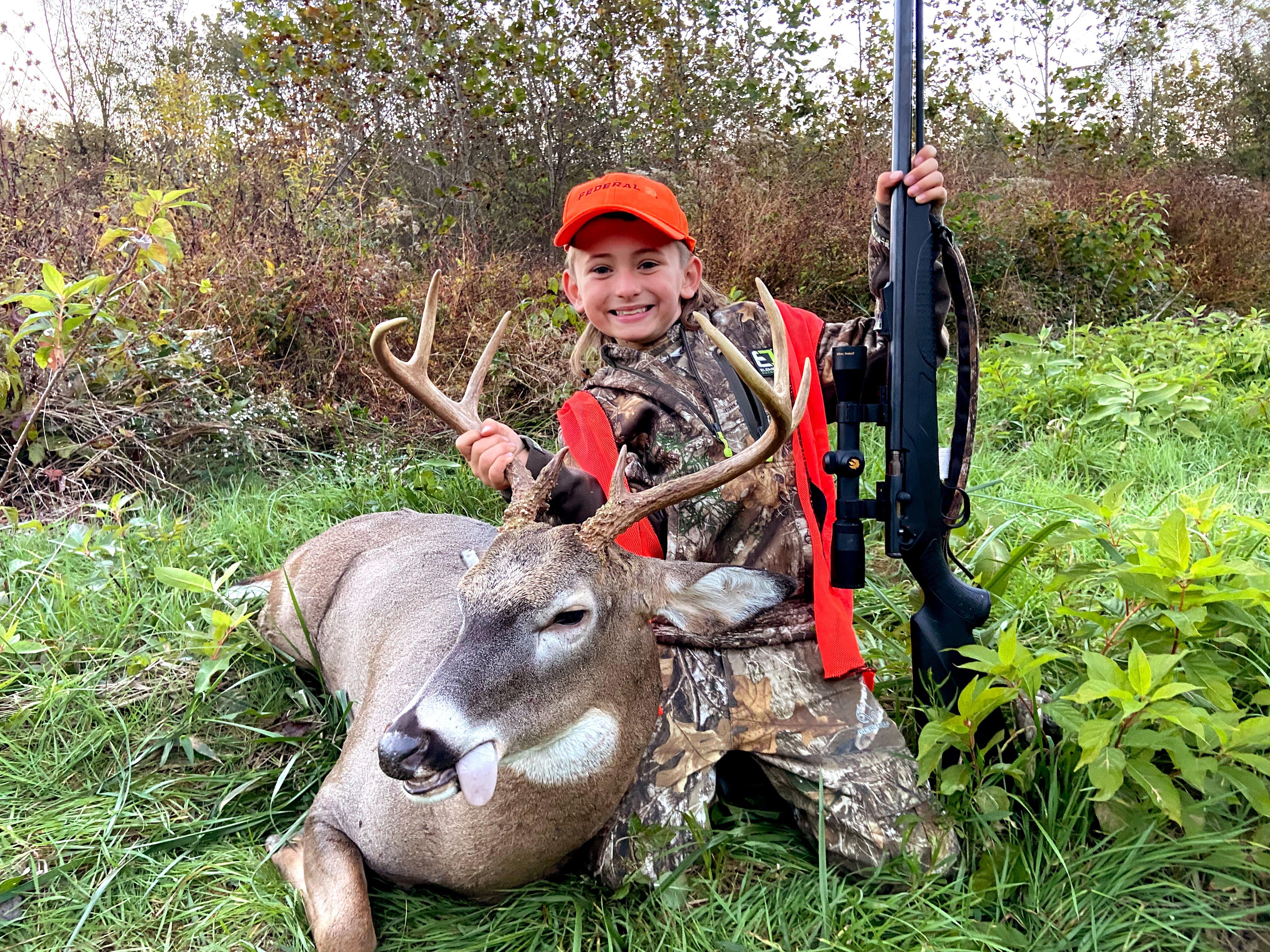
The author’s son with a nice October Kentucky buck. Image by Will Brantley
Don’t Overthink Disturbance
In late September, I sparked a drip torch, and a buddy and I set fire to a field that I’d sprayed with herbicide a few weeks earlier. Bow season was already in, and I had a feeder and camera already running in the field. Ideally, I would’ve planted earlier, but there’d been no rain in the forecast.
After burning off the field, I tilled the plot with my tractor, and then we sowed it, and finished with a cultipacker behind my pickup truck. We talked at full volume the entire evening and worked until well past dark.
Several hours after we left, a big 8-pointer — a deer I’d never seen — appeared on the trail camera at the feeder. Maybe he was bothered by the smells of fire, fertilizer, sweat and diesel fuel we’d left behind, but it didn’t stop him from settling in to eat corn for 20 minutes. The plot caught a great rain that night and turned bright green, and the buck set up shop, appearing on camera almost every evening until I killed him there a few weeks later.
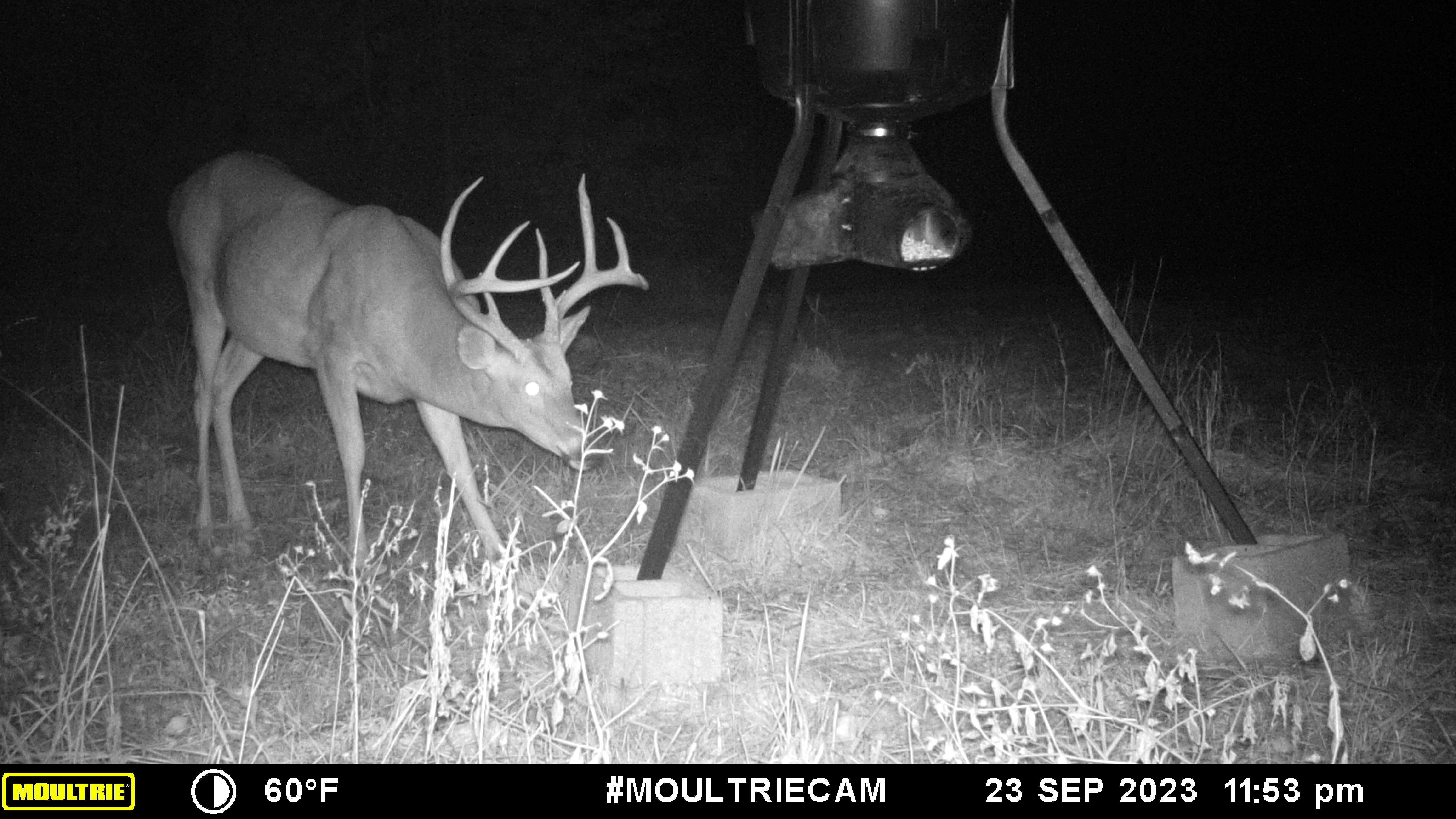
A controlled burn and food plot construction didn’t stop this nice buck from checking a feeder later that night. Image by Will Brantley.
Yeah, big bucks are smart, and avoiding detection is important for hunting success. But I think we sometimes overestimate the deductive reasoning capabilities of deer, and they certainly don’t have supernatural powers. Sometimes, disturbance is necessary to check off all the chores of hunting season. Don’t lose sleep about it.
With a Bow, Aim Low. And Keep it Close, Too
Every bowhunter goes through slumps of poor shooting. After a really ugly slump a decade ago, I managed to get my head on straight and enjoy a long streak of filled tags, short blood trails, and no misses.
That changed this fall, starting with a big doe I missed clean one evening in Tennessee. I laughed it off, but then I missed a second one the next afternoon in Kentucky. There was nothing wrong with my equipment, and I shoot a few practice arrows most days of the season.

Low aiming points and steady shots result in good blood trails. Image by Will Brantley
But both does were just farther than 30 yards — the edge of where I like to shoot at whitetails. Both were semi-alert at the release because I’d bleated to stop them. And both times, holding dead on for 30, I shot right over them. Ouch. That type thing can get in a man’s head.
The next shot I got was a few days later at yet another 30-yard doe in Tennessee. This time, when I bleated to stop her, I held my 20-yard pin a touch high and took an extra couple of seconds to settle into my anchor point. The arrow zipped through the top of her heart, and I watched her crash 50 yards away.
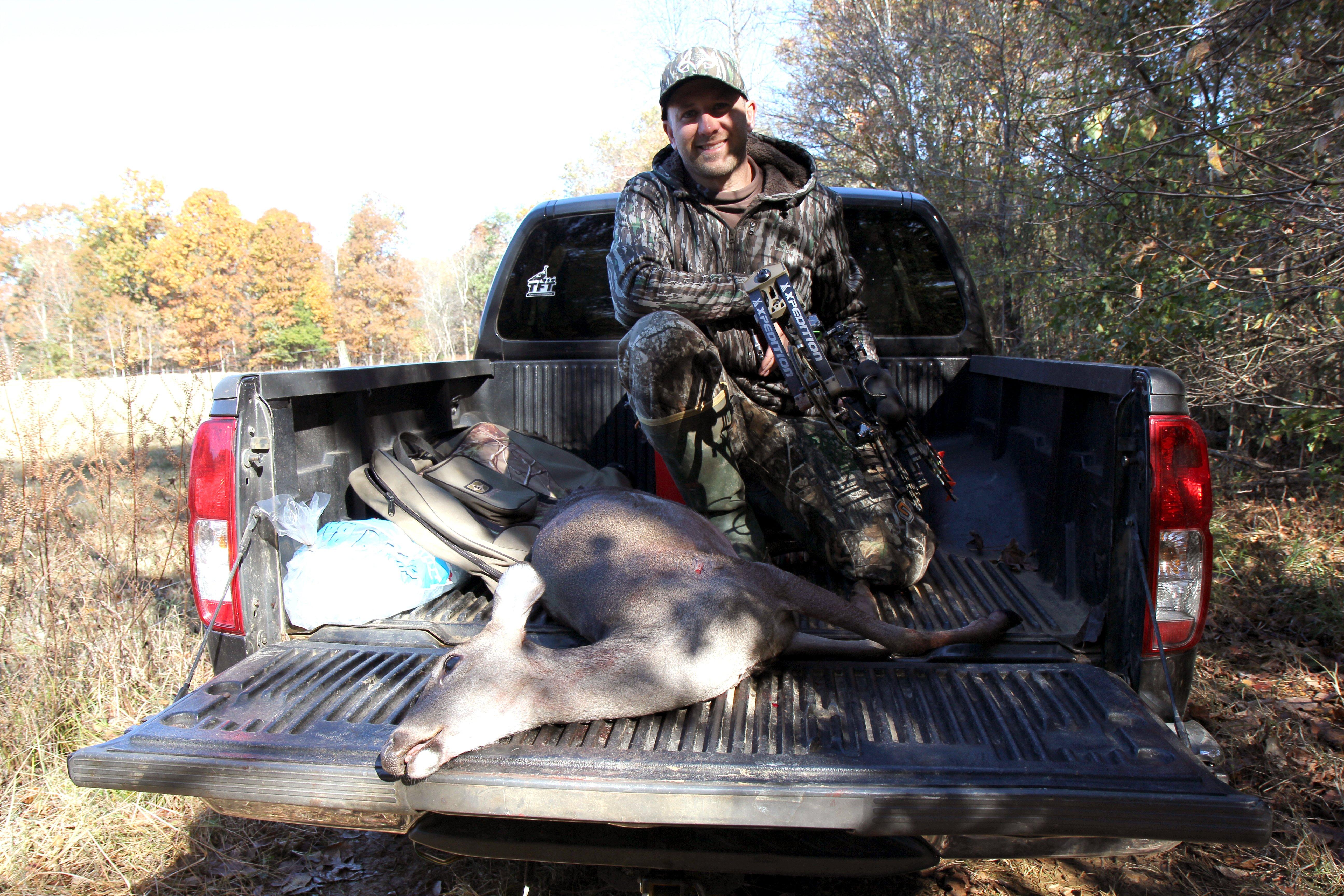
After a few early misses, the author settled in with a nice Tennessee doe. Image by Will Brantley
That all helped reinforce the two things that led to such a long streak of perfect shooting: Whitetails are jittery critters, so holding low is almost always best. And if you really want to maintain a good shot-to-kill average, keep those shots inside 30 yards.
Midday Hunting Really Can Pay Off
It was the day after Thanksgiving in central Texas, and we’d taken a quick break for lunch after hunting that morning. There were discussions of a nap because it’s Texas, after all, and the feeders wouldn’t be going off for hours.
But it was cold and breezy, with just enough rut left in the air to think that we might catch a good deer on his feet and cruising. And at 2 p.m., that’s exactly what happened. My wife, Michelle, looked down the draw 100 yards from her stand and spotted a heavy, old 10-pointer slinking through the brush. She wasted no time in dropping him with her Browning X-Bolt 6.5 Creedmoor.
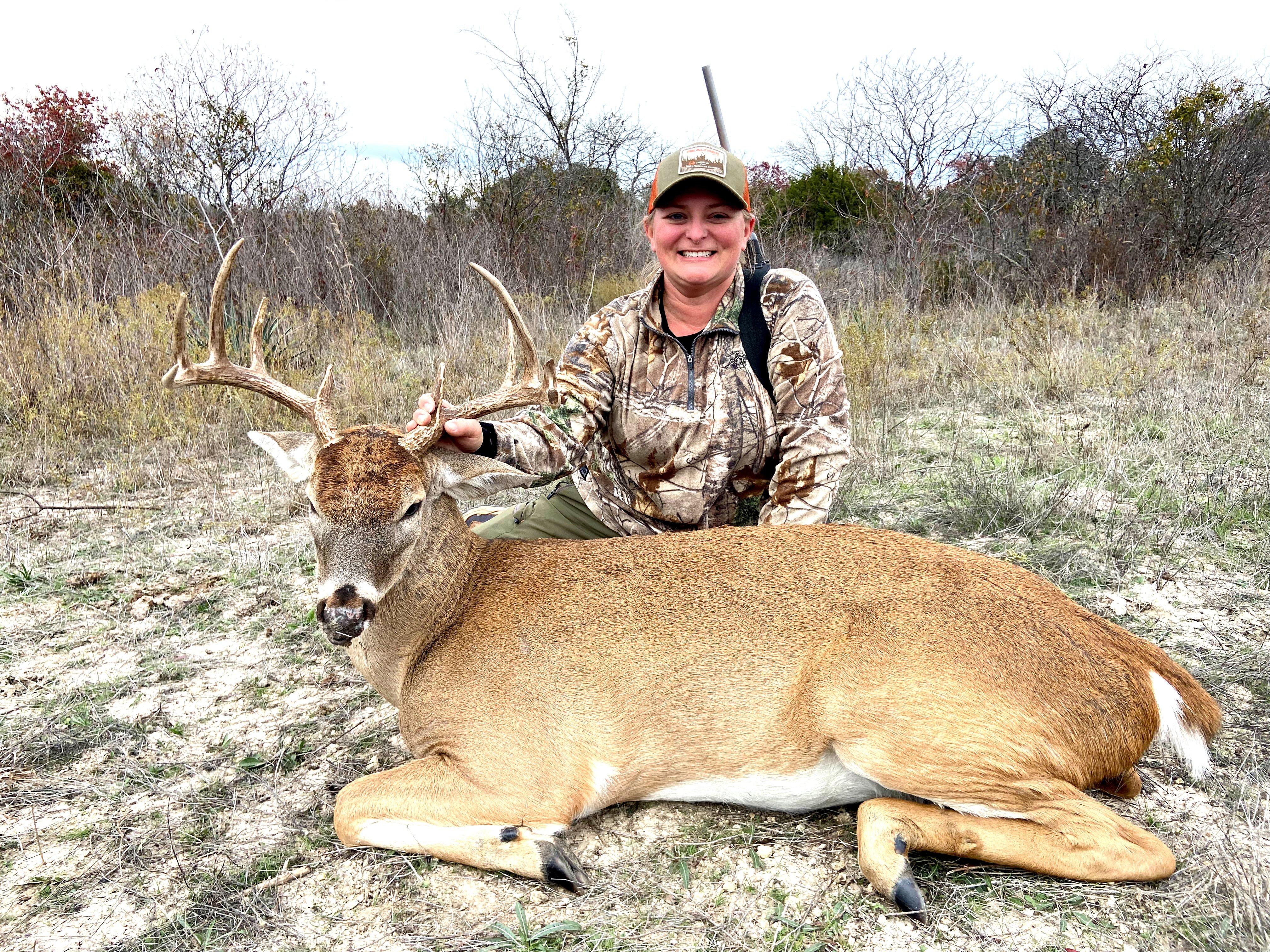
Michelle Brantley with a nice midday Texas buck. Image by Will Brantley
A few days later found me in a ladder stand in northern Illinois, where I used a Henry Single Shot in .360 BuckHammer to kill a nice 10-pointer that waltzed across a brassica plot. The midday sun was high in the air, and all signs suggested the rut was finished, except that buck definitely seemed to be cruising for does.
Had you asked me either day if I planned to see those bucks hours before dark, I would’ve said, “No way.” But that’s another lesson worth re-learning: If you’re not in the stand, you won’t fill a tag.
Still-Hunting with a Gun Works
In mid-November, I guided a hunter who traveled from Montana to hunt the opening week of rifle season in Kentucky. The rut was on fire, and I planned for him to sit daylight to dark in a lock-on stand on a white oak ridge. But he didn’t like being confined to a small stand high in the canopy, so on the second morning, he climbed down, crashed his rattling antlers together, and called a fine 8-pointer to 20 yards — an easy shot for the Winchester XPR .350 Legend he was shooting.
A few days later, I checked Anse out of school to hunt a Tennessee hayfield where I’d been seeing some nice bucks chasing does. It was drizzling rain that morning, and with no blind or stand in which to sit, Anse and I slipped into the woods and sat on the ground, with his rifle locked into a Bog DeathGrip tripod. We bumped some deer early, but then one of the bucks I’d been seeing — a nice, wide 8-pointer — stepped into view at 80 yards. Anse worked the controls on the tripod, zoomed the scope a bit, and dropped the buck with one shot.
“Sneaking around on the ground is way more fun than sitting in a stand,” he said. It’s how I learned to hunt when I was his age, and I couldn’t argue with the logic.

The author’s son with an 8-pointer he took by still-hunting on a rainy morning. Image by Will Brantley
HANBACK’S LESSONS
No matter how long you’ve been hunting, and no matter how much you think you know, an old buck does things that frustrate and humble you. I’ve been at this game for more than 30 years, and nothing a big deer does surprises me anymore. Nothing. Here are five takeaways from my 2023 season. — Mike Hanback
Deer Movement is Wildly Unpredictable
The bowhunting weather in Virginia was excellent this past October. Multiple days of cool, clear, high-pressure skies made for enjoyable sits morning and afternoon. Conditions were perfect, and spirits were high. We figured that bucks should start scraping and prowling in the pre-rut any day. I hunted every day for two weeks and never saw a shooter.
I headed to Nebraska for rifle season. The first evening, I glassed 40 deer coming to a milo field, the only major food source within 2 miles. The next afternoon from the same stand, with the same weather and a west wind, I saw four does — and shot a 6-year-old 10-pointer at sundown.
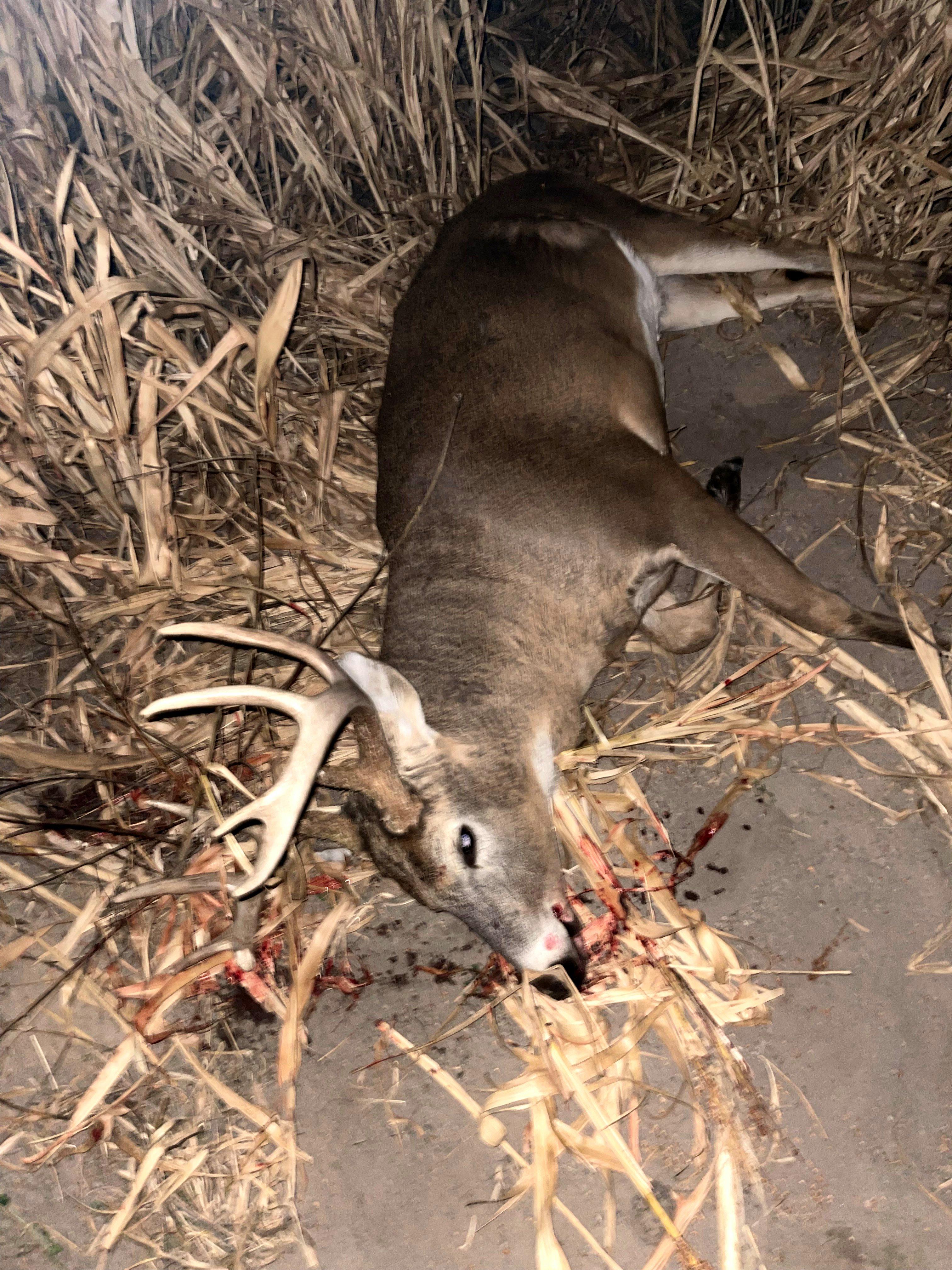
Author Mike Hanback’s mature Nebraska 10-point was taken at sundown over a milo field. Image by Mike Hanback
In Oklahoma during December, hard-frost mornings and daytime highs the 30s were just right for hunting food sources in the post-rut. Two mornings, I saw no deer, and then saw only three or four in the afternoons. The fourth day, with a south wind, it warmed to 58. At 4:03 p.m. I killed a 150-class 10-pointer.
I’m reminded time and again that deer movement can be wildly unpredictable from month to month, week to week, and even day to day. Some days, they move well. Other days, they don’t, regardless of weather, moon phase, wind speed, hunting pressure, or any other factor.
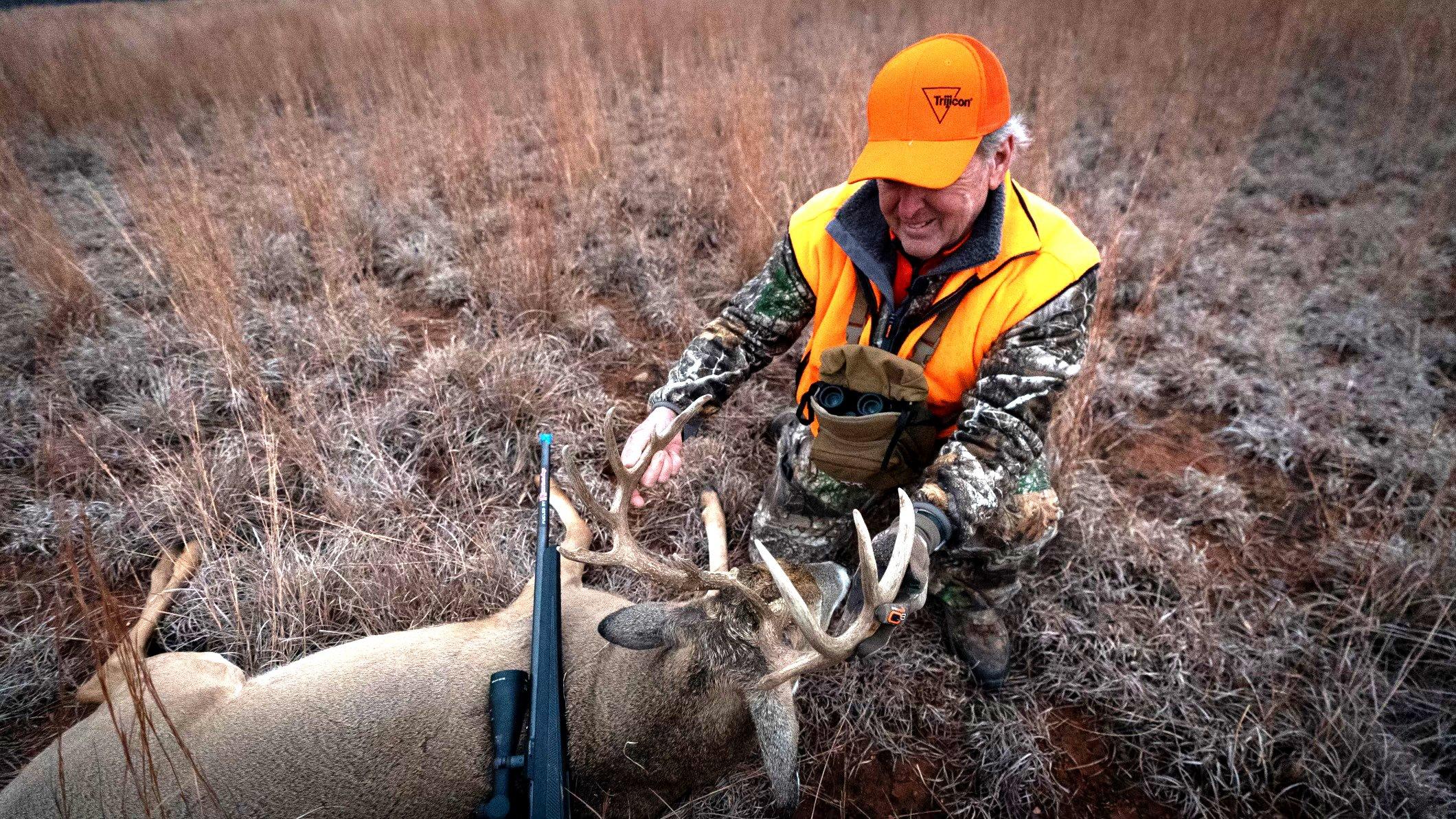
Hanback with a nice 150-class Oklahoma 10-pointer. Image by Mike Hanback
You should play the odds and hunt when conditions are best, such as clear days that follow a cold front, and during a moon that waxes to full into November. But hey, you never know about deer, and especially mature bucks. Many “perfect” days, you won’t see squat. And during a “poor” afternoon, you might see deer everywhere and punch your tag.
Take Him When You Can
The heavy-set 10-point kept walking our way. “Let him come far as you can; great footage,” my cameraman whispered. I had the scope’s cross-hair pinned on the deer’s shoulder, with pressure on the trigger. Against my better judgment, I waited. Then poof, he was gone, down in a ditch and never to be seen again.
It’s a cruel lesson — one I’ve learned too many times through the years. A big buck will get away from you in a New York minute if you give him half a chance.

Don’t pass on a clean shot opportunity or you could miss out. Image by Mike Hanback
Don’t let that happen. The instant you confirm a deer is a buck, and then a shooter buck, and that he’s in range with his vitals clear, don’t look at his rack again. Act. Settle the sight pin or cross-hair on his vitals, calm your nerves, and trip the release or press the trigger now. If you are indecisive and dawdle for even seconds, a big deer can get away and break your heart. Be safe and sure of your target, and then take him as soon as you can.
Know the Legal Shooting Light
I’ve shot quite a few bucks during the last hour of daylight in recent seasons, but none pushing up hard against the end of legal shooting time, which is 30 minutes after sunset in most states. Until one afternoon in Kansas during the 2022 season. With six minutes to go before legal light ended at 5:27 p.m., a 160-class giant stepped out of the shadows, and I got him.
That memory was rattling in my mind in Nebraska this past November. One day, the sun set at 5:16 p.m. I wasn’t seeing much movement and was thinking of packing it in, but decided to sit tight.
At 5:34 p.m., minutes before the end of legal shooting, an old 10-pointer with antler bases thick as a beer can jumped a wire fence and stepped into the milo. I settled the Trijicon’s cross-hair on his shoulder and dropped him.
***Don’t Miss: *THE 4 BEST RIFLE ACTIONS FOR DEER HUNTING
Hunting big deer is often a game of inches or minutes. Don’t get lazy or discouraged if you’re not seeing much activity one evening. Squeeze every minute out of each day. Most state game and fish apps, and all the weather apps, feature daily sunrise/sunset times to the minute.
Study those times as part of your pre-hunt routine. As the sun sets each afternoon, check your watch often, and hunt those magical 30 minutes when big deer move right until legal light ends. Give it all you have, but obviously never exceed the legal time limit.
Keep Your Grunt Call Handy
The heavy 8-pointer popped onto the levee road 350 yards away, heading for a dry canal where he would be out sight in seconds. I pulled out my call and cut loose a barrage of loud, aggressive grunts. To my surprise and delight, the buck stopped, looked and began marching my way.
I kept calling intermittently, and he keep looking and walking. A couple of times, he paused and turned his head as if losing interest. I grunted harder, and by gosh, it worked. The old Mississippi warrior marched to within 120 yards, and I dropped him with a 150-grain bullet. We got it all on tape for an epic episode of Big Deer TV.

This mature Mississippi buck came to a grunt call for the author. Image by Mike Hanback
Three takeaways: One, carry your call on every hunt, and keep it handy so you can grab it and grunt in seconds. Two, grunt as loudly and aggressively as you need to at every buck you see walking out of shooting range. You have nothing to lose, and once in a while, he’ll respond. Three, when you make contact and get a buck’s attention, watch and read the deer. If he keeps walking toward you, great. Get your bow or gun ready. But the second he stops or starts to turn, hit the buck with more grunts to keep him hooked and moving your way.
Keep Grinding
I hiked in deep snow for a week in Montana and shot a buck on the last afternoon. On the fifth day of five-day hunts in Nebraska and Oklahoma, with time running out and things looking bleak, I punched my tags. I grunted in that Mississippi 8-pointer on my last afternoon in the Delta.
***Don’t Miss: *WHY YOU SHOULD SCOUT FOR DEER IN JANUARY
As I have written and said on television many times, deer hunting is way more mental than physical. Every once in a blue moon, a good buck comes easily. But most of the time, you work and struggle for days, weeks, or maybe even a month to see a big deer, much less shoot one.
How you handle those tough times says everything about you as hunter. Will you give in to the mind games and pack it in? Or will you hang mentally tough and grind to the bitter end? Those four bucks I shot at the wire this past fall were not the biggest deer I’ve ever killed, but boy were they special.



